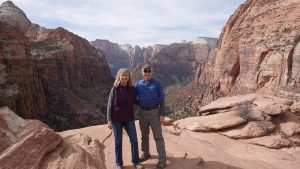 Well….what about me? I retired in 2016 after 38 years in the classroom. Now, I know what you’re thinking, 38 years? Yep, I find it hard to believe myself as there were hard years and…well, there were never any easy years, but they were all good and while I miss working with the kids, I don’t miss the faculty meetings 🙂
Well….what about me? I retired in 2016 after 38 years in the classroom. Now, I know what you’re thinking, 38 years? Yep, I find it hard to believe myself as there were hard years and…well, there were never any easy years, but they were all good and while I miss working with the kids, I don’t miss the faculty meetings 🙂
I’ve taught everything from Architectural CAD to Algebra, from Woodshop to Web Design with the last 22 years being in technical subjects. Now I find myself teaching teachers and I pride myself on trying to be as supportive as possible. When a student completes one of my courses, it is my goal that they end up with skills and materials they can use the very next day. It’s impossible for anyone to write a course that will fit everyone, so I try to be as flexible as possible so you can adapt the lessons to your real classroom life.
In addition to teaching, I’ve built furniture commercially, built houses, and even found time to build a 200 M.P.H. 4-seat airplane from a book.
In 2004, I had the opportunity to accept a teaching position at Brussels American School, which serves families from about two dozen nations associated with NATO. We were just going to stay for a year or two, but when we discovered what the school could offer our own young children, we decided to stay until they graduated, and then some!
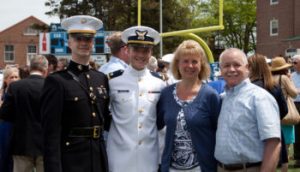 Pictured is my family. Vicky was an R.N. during her career and was the nurse at our school in Brussels. David is next to her and graduated from the United States Coast Guard Academy in 2015 where he majored in some sort of math I’ll never understand. David served three years on cutters and is now flying C-130Js from the Coast Guard Air Station in Elizabeth Cty, NC. Paul is next to him and graduated from the United States Naval Academy in 2014 with a degree in physics and was stationed at MCAS Miramar as a CH-53 pilot. He is currently at the Naval Post Graduate School in Monterey, CA. I am the short, dumpy-looking fellow with the “I lucked out on the family lottery” look on his face.
Pictured is my family. Vicky was an R.N. during her career and was the nurse at our school in Brussels. David is next to her and graduated from the United States Coast Guard Academy in 2015 where he majored in some sort of math I’ll never understand. David served three years on cutters and is now flying C-130Js from the Coast Guard Air Station in Elizabeth Cty, NC. Paul is next to him and graduated from the United States Naval Academy in 2014 with a degree in physics and was stationed at MCAS Miramar as a CH-53 pilot. He is currently at the Naval Post Graduate School in Monterey, CA. I am the short, dumpy-looking fellow with the “I lucked out on the family lottery” look on his face.
During the summer of 2016, we decided to move back to the States and relax a little more. The move went fine, but the “relaxing” part has yet to come as we are spending lots of time traveling to see family and such.
For those keeping score,
Hometowns: Mukilteo, WA, Kortenberg, Belgium, St. George, Utah and Aiken, SC.
Education:
Western Governors University
M.Ed. Learning and Technology
Washington State University
B.A. Tech Ed (Double Major)
Professional experience:
Sherwood High School, Sherwood, OR January 1977 – June 1977
Math, Woodworking, Metals, and Auto
Marysville-Pilchuck High School, Marysville, WA September 1977 – June 1980
General Math and Algebra, Woodworking, Metals, and Auto
Marysville Middle School, Marysville, WA September 1980 – June 1989
General Math and Occupational Versatility
Cedarcrest School, Marysville, WA September 1989 – June 1996
Algebra, Geometry, and Gifted Math.
Marysville-Pilchuck High School, Marysville, WA September 1996 – June 2004
Engineering & Architectural Computer Graphics and Computer Animation.
Brussels American School, Brussels, BE September 2004 – June 2016
Engineering and Architectural Computer Graphics (CAD), Web Design, Digital Imaging, Desktop Publishing, Video Production, and Computer Animation. Educational Technologist.
Home church: IPC, Brussels, Belgium, and Good Shepherd Presbyterian, St. George, Utah, South Aiken Presbyterian, Aiken, SC.
So, that’s a little about me for now. I look forward to hearing a little bit about you soon.
Quast: 267
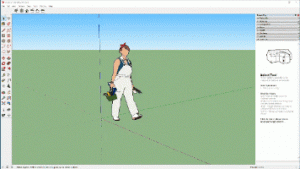 This is a series of video screencast tutorials that demonstrate how to create a doghouse using SketchUp.
This is a series of video screencast tutorials that demonstrate how to create a doghouse using SketchUp.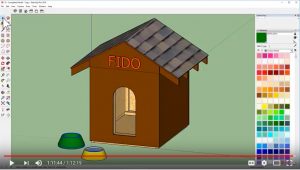 The screencast is indexed giving students the advantage of quickly find out where they left off from the day before or go back and rewatch a segment for better understanding.
The screencast is indexed giving students the advantage of quickly find out where they left off from the day before or go back and rewatch a segment for better understanding.
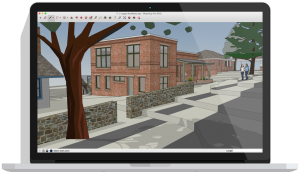 A year or two ago, Trimble released a web-based version of SketchUp. Branded as
A year or two ago, Trimble released a web-based version of SketchUp. Branded as 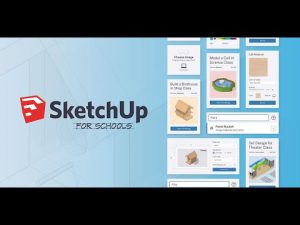
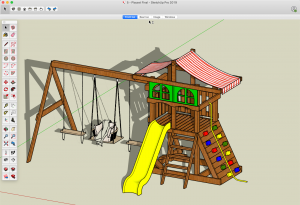 Just what the title says. This series of screencasts will take your students through the entire construction, one mouse-click at a time. It assumes a basic understanding of SketchUp’s commands and some experience, but otherwise, this pretty-much has it all. As their teacher, you can decide just how far they go and for those that finish first, there are plenty of features they can add to make the ultimate backyard toy.
Just what the title says. This series of screencasts will take your students through the entire construction, one mouse-click at a time. It assumes a basic understanding of SketchUp’s commands and some experience, but otherwise, this pretty-much has it all. As their teacher, you can decide just how far they go and for those that finish first, there are plenty of features they can add to make the ultimate backyard toy. The screencast is indexed, so you can take students to a specific point each day and/or they can easily return to a previous chapter to go over a step again.
The screencast is indexed, so you can take students to a specific point each day and/or they can easily return to a previous chapter to go over a step again.

 Pictured is my family. Vicky was an R.N. during her career and was the nurse at our school in Brussels. David is next to her and graduated from the United States Coast Guard Academy in 2015 where he majored in some sort of math I’ll never understand. David served three years on cutters and is now flying
Pictured is my family. Vicky was an R.N. during her career and was the nurse at our school in Brussels. David is next to her and graduated from the United States Coast Guard Academy in 2015 where he majored in some sort of math I’ll never understand. David served three years on cutters and is now flying 